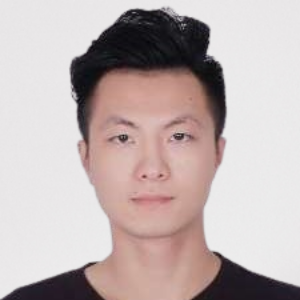Title : A gpt-based question-and-answer chatbot and phantom-less QCT bone mineral density measurement system for osteoporosis
Abstract:
Bone health attracts more attention recently and an intelligent question and answer(QA) chatbot for osteoporosis is helpful for science popularization. With Generative Pretrained Transformer(GPT) technology developing, we build an osteoporosis corpus dataset and then fine-tune LLaMA, a famous open-source GPT foundation large language model(LLM), on our self-constructed osteoporosis corpus. Evaluated by clinical orthopaedic experts, our fine-tuned model outperforms vanilla LLaMA on osteoporosis QA task in Chinese.
Three-dimensional quantitative computed tomography(QCT) measured bone mineral density(BMD) is considered as more accurate than DXA for BMD measurement in recent years. We develop an automatic Phantom-less QCT(PL- QCT) that is more efficient for BMD measurement since no need of an external phantom for calibration.
Combined with LLM on osteoporosis, our PL-QCT provides efficient and accurate BMD measurement for our chatbot users.
Material and Methods:
We build a novel osteoporosis corpus containing about 30,000 Chinese literatures whose titles are related to osteoporosis. The whole process is done automatically, including crawling literatures in .pdf format, localizing text/figure/table region by layout segmentation algorithm and recognizing text by OCR algorithm. We train our model by continuous pre-training with Low-rank Adaptation(LoRA, rank=10) technology to adapt LLaMA-7B model to osteoporosis domain, whose basic principle is to mask the next word in the text and make the model predict that word. The loss function is defined as cross-entropy between the predicted and ground-truth word. Experiment is implemented on single NVIDIA A800 GPU for 15 days. Our automatic PL-QCT BMD measurement adopt AI-associated region-of-interest(ROI) generation algorithm for localizing vertebrae-parallel cylinder in cancellous bone. Due to no phantom for BMD calibration, we calculate ROI BMD by CT-BMD of personal muscle and fat.
Results & Discussion:
Clinical orthopaedic experts are invited to design 5 osteoporosis questions in Chinese, evaluating performance of vanilla LLaMA and our fine-tuned model. Our model outperforms LLaMA on over 80% of these questions, understanding ‘Expert Consensus on Osteoporosis’, ‘QCT for osteoporosis diagnosis’ and ‘Effect of age on osteoporosis’. Detailed results are shown in appendix. Future work may be done by training a larger LLM on the whole orthopaedics with more high-quality domain data, or a multi-modal GPT combining and understanding X-ray and medical text for orthopaedic computer-aided-diagnosis. However, GPT model gives unexpected outputs sometimes, such as repetitive text or seemingly normal but wrong answer(called ‘hallucination’). Even though GPT give correct answers, it cannot be considered as valid clinical diagnoses instead of clinical doctors.
The PL-QCT BMD system provided by Bone’s QCT(Bone’s Technology(Shenzhen) Limited) achieves 0.1448mg/cm2(spine) and 0.0002 mg/cm2(hip) mean absolute error(MAE) and linear correlation coefficient R2=0.9970(spine) and R2=0.9991(hip)(compared to QCT-Pro(Mindways)) on 155 patients in three-center clinical trial in Guangzhou.
Conclusion:
This study builds a Chinese osteoporosis corpus and develops a fine-tuned and domain-adapted LLM as well as a PL- QCT BMD measurement system. Our fine-tuned GPT model shows better capability than LLaMA model on most testing questions on osteoporosis. Combined with our PL-QCT BMD system, we are looking forward to providing science popularization and early morning screening for potential osteoporotic patients.
What will audience learn from your presentation?
- The audience will learn about the basis and advanced technology of GPT and large language models.
- The audience will learn about how to apply GPT or large language models on osteoporosis.
- The audience will learn about the basis and advantages of phantom-less QCT for clinical bone mineral density measurement.



